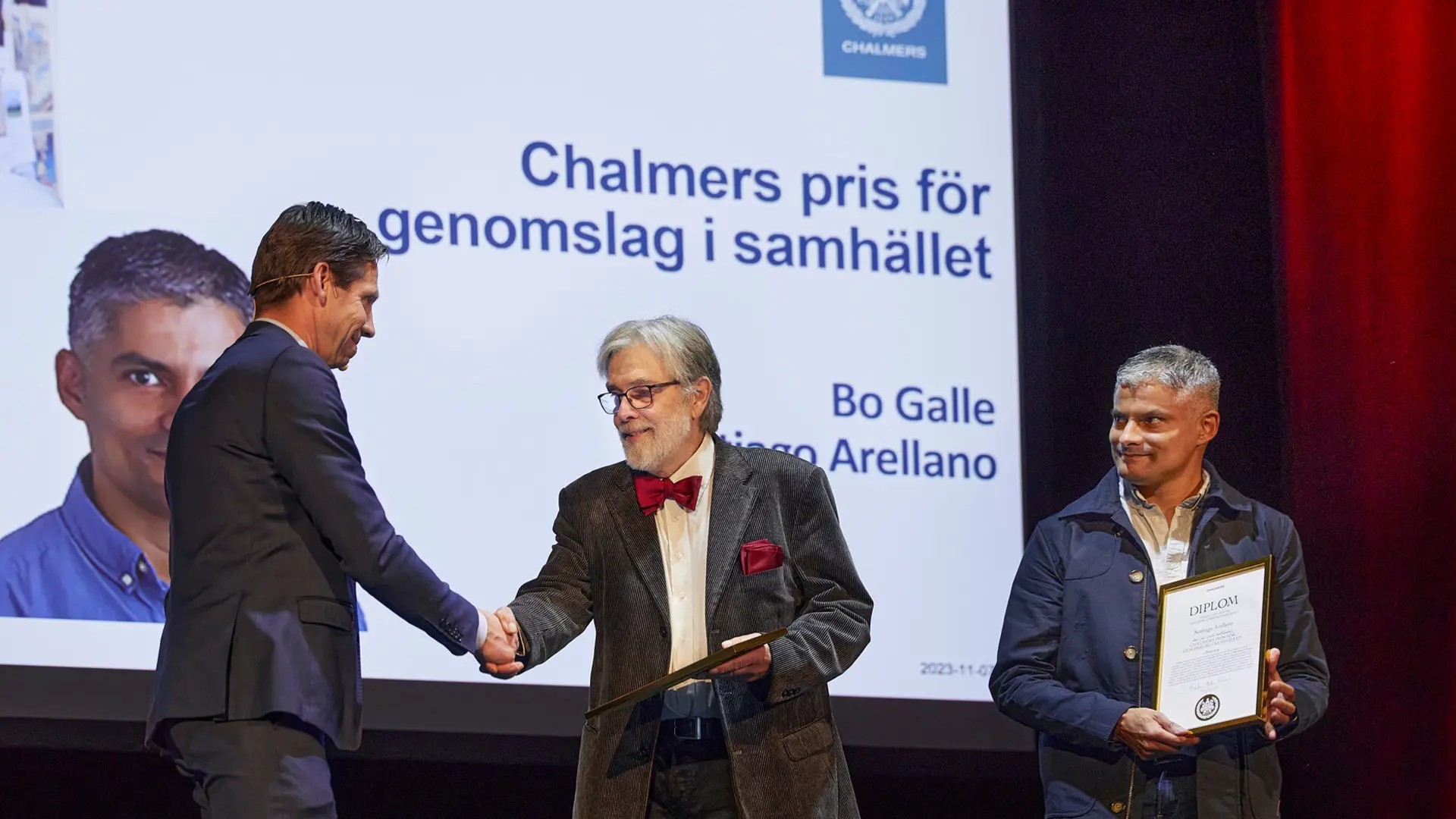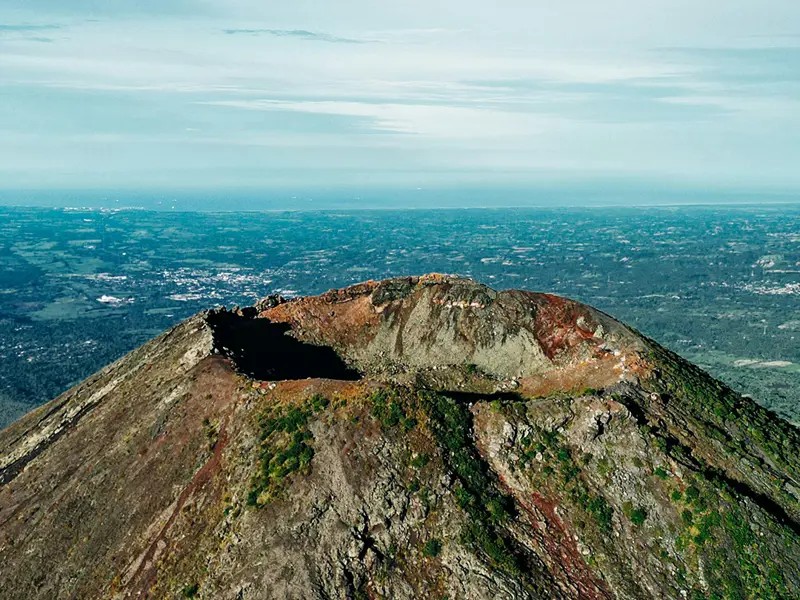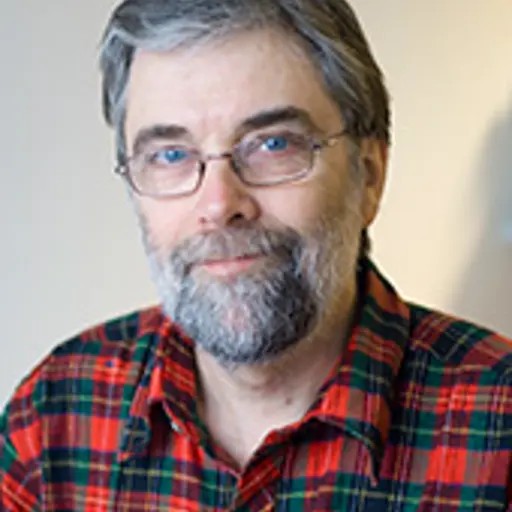
Bo Galle and Santiago Arellano are awarded the Chalmers impact award for their development of a system that forewarns about volcanic eruptions – and saves lives.
Bo Galle is a professor emeritus at the Department of Geoscience and Remote Sensing at the Department of Space, Earth, and Environment. It was in the early 2000s that he conceived the idea of using a proven measurement method in a new context. During a conference on stratospheric ozone in Palermo, he realized that the optical measurement methods he had long been working with to measure air pollution could be used to measure gas emissions from volcanoes.
Measures volcanic gases
After some successful tests on Mount Etna, which garnered significant attention in the field of volcanology, Bo Galle applied to develop the method within the framework of an EU project, Dorsiva (Development of Optical Remote Sensing Instruments for Volcanological Applications). The project was successful and received a follow-up in the EU project Novac in 2005. Its aim was to install the measurement technology on initially 15 volcanoes and demonstrate its utility for volcano risk assessment. It has since evolved into a global network, and today the technology is used at more than 200 measurement stations. So, how does the method actually work?
"We utilize differential optical absorption spectroscopy, Doas. The measuring instrument 'looks' directly upwards, with the blue sky as the light source. If there is sulfur dioxide in that direction, we observe absorption at certain wavelengths – and the amount of light absorbed tells us which gas is involved. It's the gas that drives the eruptions, and the more gas, the more activity," says Bo Galle.
Facilitates predictions and cooperation
When Novac concluded in 2010, they continued with other sources of funding. Santiago Arellano joined as a doctoral student during this time after several years of international collaboration with Bo Galle. In his home country of Ecuador, he was familiar with both volcanoes and the fact that eruption prediction technology was expensive and cumbersome. Additionally, measurement tools were shared between neighboring countries, creating logistical challenges.
"In Ecuador, I worked at the national volcano observatory, where we experienced three to four eruptions in just over four years. The key questions were whether and, if so, when an eruption would occur and how severe it might be. Volcanoes often provide signals, but it's not always possible to detect or interpret their significance. It's simply difficult to determine if they indicated a major eruption was imminent."
"Only a handful of observatories in the world had access to tools capable of measuring gas emissions – one of the most critical indicators – and all of this changed with the Chalmers-developed Doas instrument. Novac provided observatories with access to technology they didn't have before," he says.
Easy to use and robust
Furthermore, Bo Galle and Santiago Arellano automated and downsized the instrument and used data from volcanoes worldwide for research on the dynamics and impact of volcanic activity. Instead of needing to mount the instrument on a vehicle and drive through plumes of smoke on the mountain's slope, it could now be attached to the volcano and automatically measure the number of kilograms of gas emitted per second.
"The telescope scans through the gas plume from horizon to horizon. This was entirely new, not only being able to read emissions but also doing so with a time resolution of five minutes. Then, one can compare gas leaks with seismic or other types of geophysical data, and this combination provides substantial insights into what is happening," says Bo Galle.
Volcano peaks pose challenging environments, with high altitudes, acid rain, ash, and rust. Therefore, a key aspect of success was making the instruments small, rugged, and energy efficient. They can now be powered by a small solar panel, further reducing costs.
"In these regions, resources are often limited, so it greatly facilitates matters that the instruments are virtually maintenance-free," says Bo Galle.
Today, there are approximately 200 Chalmers measurement instruments on about 60 volcanoes worldwide. Novac operates in 22 countries, and members regularly meet and exchange data and knowledge to learn from each other.
An advantage to come from Sweden
How did researchers from Sweden, a country without volcanic activity, become authorities in this field?
"It has been more of an advantage than a disadvantage not to be experts. We came from the outside without preconceived notions. We also were not involved in previous conflicts and grievances that could hinder collaborations – we were not a threat, but we could be of great service," says Bo Galle.
Santiago Arellano agrees.
"What we're engaged in is uncommon in our part of the world, but it's precisely what Chalmers aims to do: to utilize science for the benefit of society. Nowadays, most in the world of volcanology know about Chalmers, which has become a respected name in an area that wasn't particularly relevant to Sweden in the past," he says.
"The world of volcanoes has traditionally been very provincial and locally oriented. Novac is the first and largest example of a coordinated global observation and cooperation network in this field, affecting the lives of an eighth of the world's population."

Saving lives in El Salvador
The duo has also witnessed very concrete results of their work. For example, many lives were saved in El Salvador in 2005.
"I provided a group in El Salvador with a measuring instrument because they were concerned about the Santa Ana volcano. They measured the volcano during the spring and summer and recorded 500 tons of sulfur dioxide per day – before it suddenly increased significantly to 4,000 tons per day. The day before the eruption, the last 200 people were evacuated from the volcano's slope – and on 1 September it erupted," says Bo Galle.
"Our project began precisely on that date, so on the very first day, the instruments contributed to a successful evacuation."
Instrument built at Chalmers
One thing that makes the instruments used unique is that all of them are based on the exact technology developed by Galle and Arellano – and every instrument is assembled here at Chalmers.
"Since we published the technology in detail, and some groups thought they would build the equipment themselves. However, since we were the qualified experts, more and more groups came back to us, and in the United States, they abandoned their own attempts to return to us," says Bo Galle.
"It's a strength that all instruments in the network have exactly the same software and are assembled in exactly the same way. However, with that said, if someone develops better equipment, that's what we should use within the network."
Bo Galle is now retired, and Santiago Arellano leads the work at Chalmers. It largely involves managing and refining.
"There is still significant interest in the network, and we naturally keep ourselves updated on the latest technology. We have used the method for volcano and atmospheric research and satellite validation. We have close collaboration with the USGS, the United States Geological Survey, and disseminate knowledge to observatories and young researchers through educational activities with support from UNESCO, among others," says Santiago Arellano.
The Chalmers impact award was handed out by President Martin Nilsson Jacobi at the William Chalmers Lecture on 7 September.
Read more:
Read more about the work of Bo and Santiago, and how modern drone technology has helped develop monitoring of volcano emissions.
- Head of Unit, Geoscience and Remote Sensing, Space, Earth and Environment
- Professor Emeritus, Geoscience and Remote Sensing, Space, Earth and Environment

